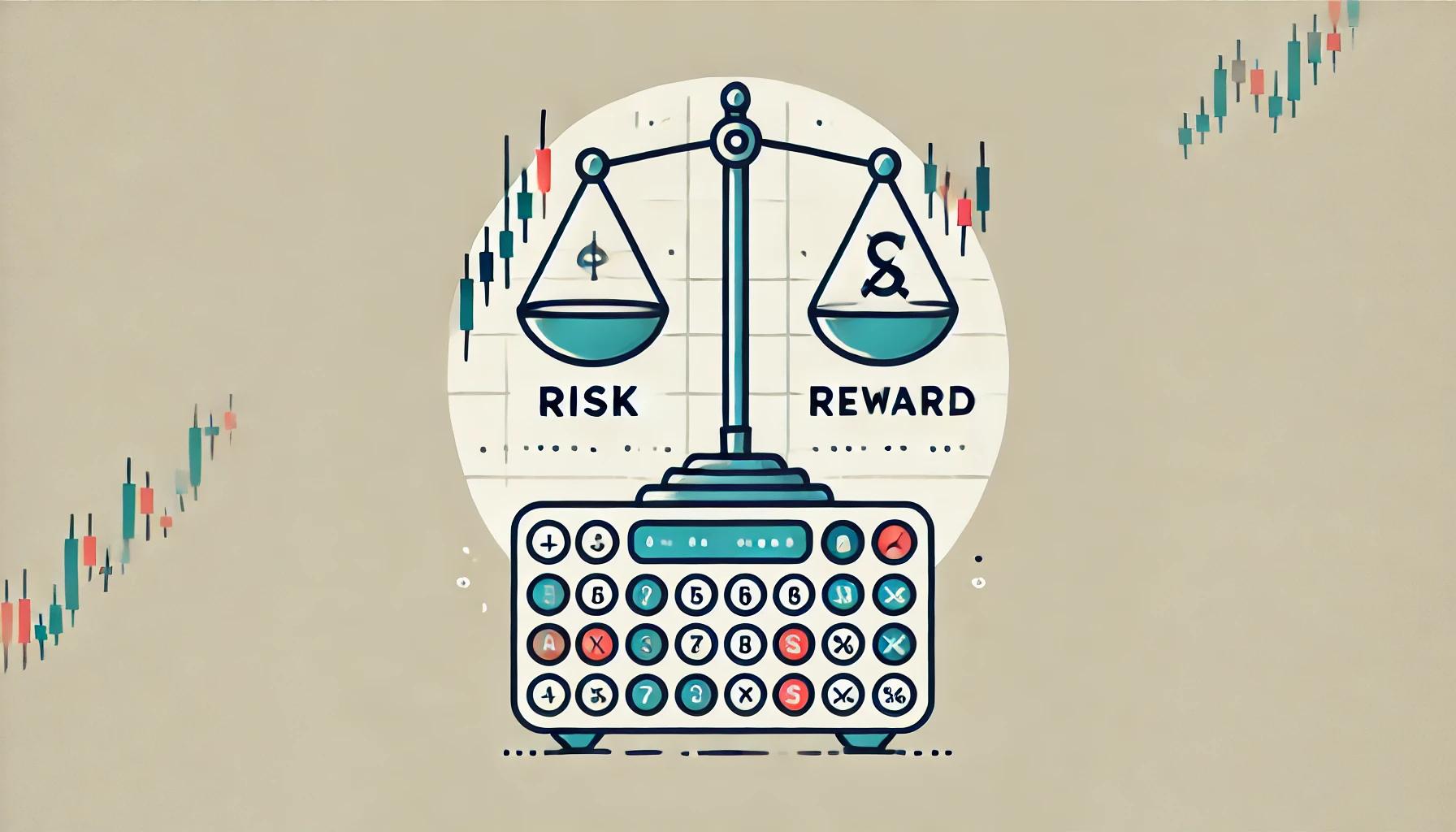Your cart is currently empty!
How to Use a Risk Reward Calculator in Trading

Risk and reward are fundamental concepts in trading, helping traders determine whether a potential trade is worth the risk involved. The risk-reward ratio is a key metric that compares the potential profit of a trade to the potential loss, giving traders a clearer picture of the trade’s viability. A risk-reward calculator is a useful tool that can assist traders in accurately calculating these metrics, ensuring that they make well-informed decisions. This article will explain how to use a risk-reward calculator in trading, its importance, and how it can be integrated into your trading strategy.
1. What is a Risk-Reward Ratio?
The risk-reward ratio is a measure of the potential profit relative to the potential loss of a trade. It is calculated by dividing the amount of risk by the amount of reward. For instance, if you are risking $100 to potentially make $300, your risk-reward ratio is 1:3. This means that for every dollar you risk, you could potentially earn three dollars.
The goal of using a risk-reward ratio is to determine whether a trade offers enough potential reward to justify the risk. Ideally, traders look for opportunities with a risk-reward ratio of at least 1:2 or higher, meaning the potential reward should be at least twice the potential risk.
2. How to Use a Risk-Reward Calculator
A risk-reward calculator helps traders easily calculate the risk and reward associated with a trade. Here are the steps to use a risk-reward calculator effectively:
a. Determine Entry, Stop-Loss, and Target Levels
Before using a risk-reward calculator, you need to determine your entry point, stop-loss level, and profit target:
- Entry Point: The price at which you plan to enter the trade.
- Stop-Loss Level: The price level at which you will exit the trade if it moves against you. This helps limit your losses.
- Target Level: The price level at which you will exit the trade if it moves in your favor, allowing you to lock in profits.
b. Input the Values into the Calculator
Once you have determined your entry, stop-loss, and target levels, input these values into the risk-reward calculator. The calculator will automatically compute the risk-reward ratio based on these inputs.
For example:
- Entry Price: $50
- Stop-Loss Price: $45
- Target Price: $60
In this scenario, your risk is $5 (entry price minus stop-loss price), and your reward is $10 (target price minus entry price). The risk-reward ratio is 1:2 ($5 risk for $10 reward).
c. Assess the Viability of the Trade
After calculating the risk-reward ratio, assess whether the trade is viable based on your trading strategy and risk tolerance. If the ratio meets or exceeds your preferred threshold (e.g., 1:2 or higher), it may be worth taking. If the ratio is lower than your threshold, it may be best to avoid the trade or adjust your levels.
3. Benefits of Using a Risk-Reward Calculator
a. Objective Decision-Making
A risk-reward calculator helps traders make objective decisions by quantifying the potential risk and reward of a trade. It removes emotions from the equation and allows traders to evaluate trades based on data rather than gut feelings.
b. Better Risk Management
By calculating the risk-reward ratio before entering a trade, traders can ensure that they are only taking trades with favorable risk-reward profiles. This helps in managing risk effectively and minimizing potential losses.
c. Consistent Profitability
Using a risk-reward calculator can help traders maintain consistency in their trading performance. By consistently aiming for trades with higher reward potential relative to risk, traders increase their chances of achieving long-term profitability.
4. Key Considerations When Using a Risk-Reward Calculator
a. Adjust Stop-Loss and Target Levels as Needed
The initial stop-loss and target levels may need adjustments based on market conditions or technical analysis. Always ensure that these levels are realistic and align with the overall market trend.
b. Understand Market Volatility
Market volatility can impact the effectiveness of stop-loss and target levels. In highly volatile markets, it may be necessary to widen your stop-loss to avoid being stopped out by minor price fluctuations. However, this also means you need to adjust your target level to maintain a favorable risk-reward ratio.
c. Combine with Technical Analysis
A risk-reward calculator is most effective when used alongside technical analysis. By identifying key support and resistance levels, trendlines, and chart patterns, traders can determine more accurate stop-loss and target levels, improving the quality of their trades.
5. Practical Example of Using a Risk-Reward Calculator
Let’s consider a practical example:
You are planning to trade a stock currently priced at $100. You believe that the stock will rise to $120, but you also want to protect yourself in case the trade goes against you. You decide to set a stop-loss at $95.
- Entry Price: $100
- Stop-Loss Price: $95 (risk is $5 per share)
- Target Price: $120 (reward is $20 per share)
Using a risk-reward calculator, you input these values:
- Risk: $5
- Reward: $20
The risk-reward ratio is 1:4, meaning that for every dollar you risk, you could potentially earn four dollars. This is a favorable trade setup that meets most traders’ criteria for a good risk-reward ratio.
6. Conclusion: The Importance of Risk-Reward Calculators in Trading
A risk-reward calculator is an essential tool for any trader looking to manage risk and make informed decisions. By calculating the potential risk and reward before entering a trade, traders can ensure that they are only taking trades with favorable ratios, which is crucial for long-term profitability.
To use a risk-reward calculator effectively, determine your entry, stop-loss, and target levels, input these values into the calculator, and assess the viability of the trade. By incorporating this tool into your trading strategy, you can improve your decision-making process, manage risk more effectively, and increase your chances of success in the financial markets.

Mr. Rajeev Prakash
Rajeev is a well-known astrologer based in central India who has a deep understanding of both personal and mundane astrology. His team has been closely monitoring the movements of various global financial markets, including equities, precious metals, currency pairs, yields, and treasury bonds.
